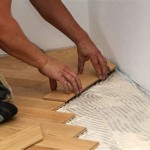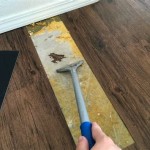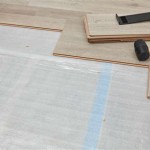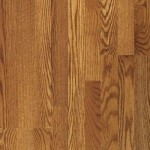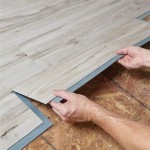Installing Hardwood Flooring on a Concrete Slab: A Comprehensive Guide
Installing hardwood flooring over a concrete slab presents unique challenges compared to installing it over a wooden subfloor. Concrete, being a porous material, can retain moisture, which can damage hardwood if not properly addressed. A successful installation requires careful planning, meticulous preparation, and the selection of appropriate methods and materials. This article provides a detailed guide to navigating the process, ensuring a durable and aesthetically pleasing hardwood floor.
Before commencing any work, a thorough assessment of the concrete slab is crucial. This involves checking for levelness, cracks, and moisture content. Variations in levelness can lead to uneven flooring, while cracks can allow moisture to seep through. High moisture content directly threatens the integrity of the hardwood. These issues must be rectified prior to installation to prevent future problems.
Assessing the Concrete Slab
The initial step involves visually inspecting the concrete slab for any signs of damage. Hairline cracks are generally not a major concern, but wider cracks indicate structural movement and require professional evaluation. Repairing these cracks with a concrete patching compound is usually necessary. Deeper cracks may necessitate more extensive repairs, potentially involving the injection of epoxy or polyurethane fillers. The goal is to create a stable and solid substrate for the hardwood flooring.
Levelness is typically checked using a long level or straightedge. Significant variations, exceeding approximately 3/16 of an inch over a 10-foot span, need to be addressed. Self-leveling concrete compounds are often used to correct these imperfections. These compounds are designed to flow and spread evenly, creating a flat surface for the flooring. The manufacturer's instructions must be followed precisely to ensure proper application and curing.
Moisture testing is arguably the most critical aspect of the assessment. Excessive moisture in the concrete slab is a primary cause of hardwood floor failure. Several methods are available for testing moisture content, each with its own advantages and limitations. Calcium chloride tests, also known as moisture vapor emission rate (MVER) tests, involve placing a measured amount of calcium chloride on the concrete surface under a sealed container for a specific period. The weight gain of the calcium chloride indicates the amount of moisture emitted from the concrete. Relative humidity (RH) tests, another common method, involve drilling small holes into the concrete and inserting probes to measure the humidity level within the slab. Electronic moisture meters can also be used to provide a quick, albeit less precise, indication of moisture content. Acceptable moisture levels will vary depending on the type of wood and the installation method, but generally, hardwood should only be installed when the moisture content of the concrete is below acceptable thresholds. Consulting the flooring manufacturer's specifications is essential.
If the moisture tests reveal unacceptable levels, remediation is necessary. This might involve applying a moisture barrier coating to the concrete surface. These coatings are designed to prevent moisture from migrating to the hardwood flooring. The effectiveness of moisture barriers depends on their composition and application. Some coatings are epoxy-based, while others are polyurethane-based. Proper surface preparation, including cleaning and etching the concrete, is essential for the coating to adhere properly. Multiple coats may be required to achieve the desired level of protection.
Choosing the Right Installation Method
Several methods exist for installing hardwood flooring over concrete. The appropriate method depends on factors such as the type of hardwood, the moisture content of the slab, and the desired aesthetic. The three primary methods are direct glue-down, floating floor installation, and installing a subfloor.
The direct glue-down method involves adhering the hardwood planks directly to the concrete slab using a specialized adhesive. This method is suitable for engineered hardwood and some solid hardwood flooring, provided the concrete slab is sufficiently dry and level. The adhesive used must be specifically formulated for hardwood flooring installation over concrete and should have a low volatile organic compound (VOC) content. The adhesive creates a strong bond between the hardwood and the concrete, providing a stable and durable floor. However, this method is less forgiving of imperfections in the concrete slab and can be difficult to remove if the flooring needs to be replaced in the future.
A floating floor installation involves assembling the hardwood planks into a single, interconnected unit that "floats" over the concrete slab. This method typically utilizes engineered hardwood or laminate flooring with a click-lock system. A thin foam underlayment is installed between the concrete and the flooring to provide cushioning and reduce noise transmission. The floating floor is not directly adhered to the concrete, allowing it to expand and contract with changes in temperature and humidity. This method is generally easier to install than the direct glue-down method and is more tolerant of minor imperfections in the concrete slab. It also allows for easier removal and replacement of the flooring.
Installing a subfloor over the concrete provides a more traditional wood subfloor for nailing or stapling solid hardwood flooring. This method often involves installing a layer of plywood or oriented strand board (OSB) over a vapor barrier. Various subfloor systems are available, including sleeper systems, which consist of wood strips (sleepers) attached to the concrete, and interlocking subfloor panels, which are designed to float over the concrete. Installing a subfloor provides a more solid and stable base for the hardwood flooring and can also help to insulate the floor and reduce noise transmission. However, this method requires more headroom and can be more expensive than the other methods.
The selection of the correct installation method hinges on a careful evaluation of the project's specific circumstances, encompassing the slab's condition, the kind of hardwood being installed, and the desired outcome. Each method presents its own set of advantages and disadvantages that warrant thorough consideration.
Preparing for Installation
Regardless of the chosen installation method, proper preparation is crucial for a successful outcome. This includes cleaning the concrete slab, acclimating the hardwood flooring, and ensuring proper ventilation.
Thoroughly cleaning the concrete slab is essential to remove any dirt, dust, debris, or adhesive residue. A concrete grinder may be necessary to remove stubborn stains or coatings. The surface should be vacuumed and mopped with a mild detergent solution. Allowing the concrete to dry completely is a prerequisite before proceeding with the installation.
Acclimating the hardwood flooring to the environment is a critical step often overlooked. Hardwood is a hygroscopic material, meaning it absorbs and releases moisture depending on the surrounding humidity. Before installation, the hardwood flooring should be stored in the room where it will be installed for several days, or even weeks, to allow it to adjust to the temperature and humidity levels. This process helps to minimize expansion and contraction after installation, reducing the risk of gaps or buckling. The manufacturer's instructions regarding acclimation should be adhered to meticulously.
Ensuring proper ventilation during and after installation is crucial for the health of the installers and the longevity of the flooring. Adequate ventilation helps to remove any fumes from adhesives or sealants and allows the flooring to dry properly. Windows and doors should be opened to provide airflow, and fans can be used to circulate the air. It is vital to follow the manufacturer's recommendations for ventilation and safety precautions.
After the hardwood flooring is installed, avoid heavy traffic for at least 24 hours to allow the adhesive or sealant to cure properly. Regular cleaning and maintenance are essential to keep the hardwood flooring looking its best. Sweep or vacuum the floor regularly to remove dirt and debris. Use a damp mop with a mild detergent solution to clean the floor. Avoid using excessive water, which can damage the wood. Applying a protective finish or sealant can help to protect the floor from scratches and stains. With proper installation and maintenance, a hardwood floor over concrete can provide years of beauty and durability.

Guidelines For Hardwood Floor Installation Over Concrete

How To Install Tongue Groove Hardwood Floors Over Concrete

Hardwood Over Concrete Auten Wideplank Flooring

How To Install A Wood Subfloor Over Concrete Rona

Guidelines For Installing Wood Floors On Concrete Subfloor Bingham Lumber

Fitting Hardwood Floor To Concrete Wood And Beyond Blog

How Do I Install A Hardwood Floor On Concrete Slab The Carpet Guys

Installing Engineered Hardwood On Concrete Villagio Guide

Preparing A Concrete Slab For Wood Flooring Kapriz Hardwood

Ask Fred How Do I Install Wood Floor Below Grade Schedule
Related Posts

